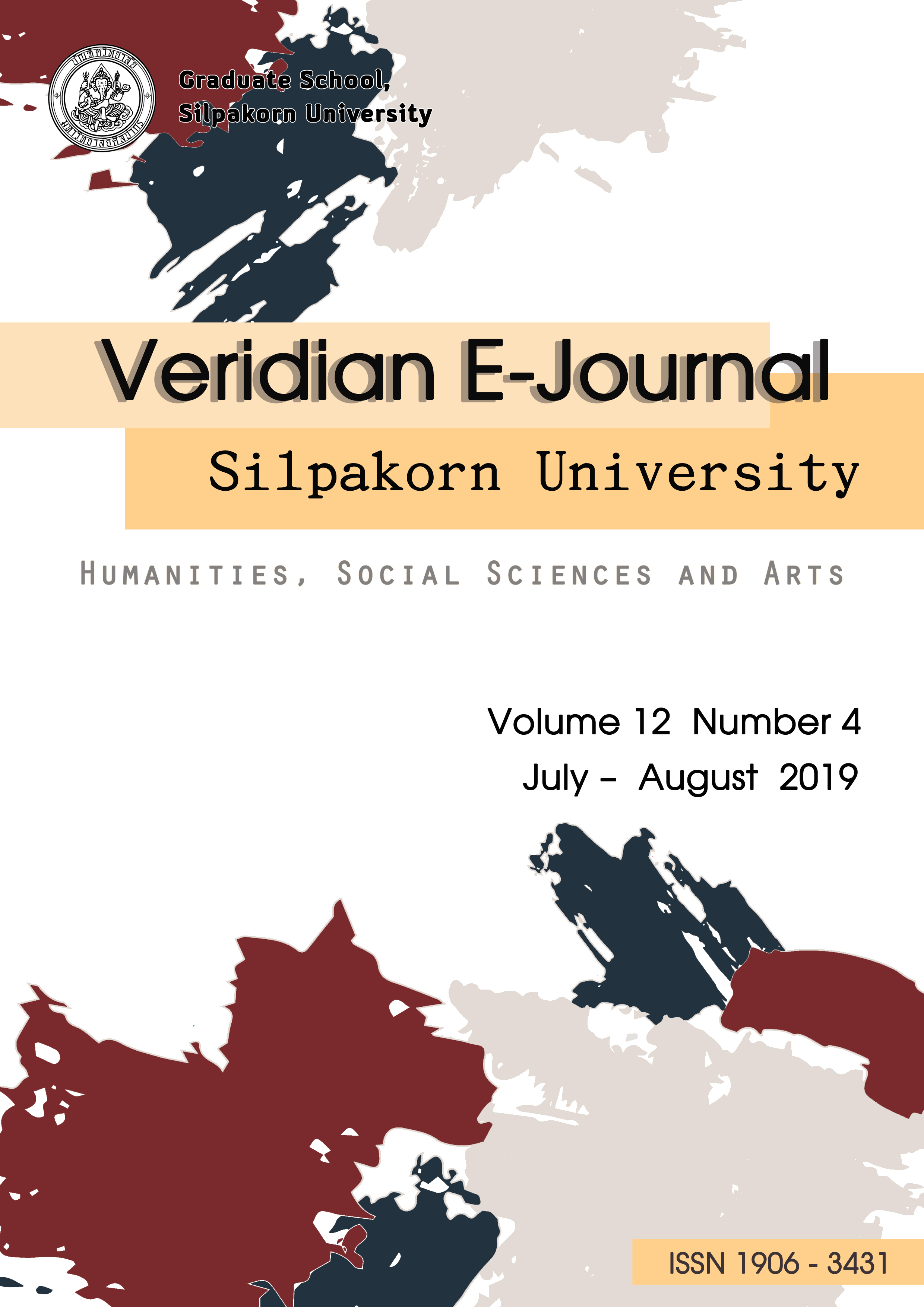การศึกษาวิธีการสื่อความหมายว่า “ทำให้” ในภาษาจีนและภาษาไทยผ่านมุมมอง งานแปลจีน-ไทย: กรณีศึกษางานแปลจากวารสารสถาบันขงจื่อ (A Study of Causative Expression in Chinese and Thai through the Perspective of Chinese-Thai Translated Works: A Case Study of Translated Works from Confucius Institute Journal)
Main Article Content
บทคัดย่อ
ทุกภาษาล้วนมีวิธีสื่อความหมายว่า “ทำให้” โดยแต่ละภาษาอาจมีรูปแบบในการสื่อสารที่แตกต่างกัน งานวิจัยฉบับนี้มีวัตถุประสงค์เพื่อศึกษาวิธีสื่อความหมายว่า “ทำให้” ในภาษาจีนและภาษาไทย โดยใช้องค์ความรู้จากงานวิจัยทางแบบลักษณ์ภาษาและเก็บรวบรวมวลีและประโยคแปลจีน-ไทยจากวารสารสถาบันขงจื่อ (ฉบับภาษาจีน-ไทย) เพื่อหาเอกลักษณ์ของวาจกแสดงการให้ทำในภาษาจีนและภาษาไทยผ่านมุมมองของการแปล ผลการวิจัยแสดงให้เห็นว่า ทั้งภาษาจีนและภาษาไทยล้วนมีวิธีสื่อความหมายว่า “ทำให้” ในรูปแบบวิเคราะห์ และรูปแบบผสาน โดยที่ภาษาจีนมีกระบวนการสร้างคำกริยาที่แฝงความหมายว่า “ทำให้” รวม 3 วิธี ได้แก่ (1) พัฒนามาจากคำคุณศัพท์ เช่น 丰富 (ทำให้อุดมสมบูรณ์) (2) สร้างคำใหม่โดยใช้คำปัจจัย เช่น 标准化 (ทำให้เป็นมาตรฐาน) (3) คำสองพยางค์ที่มีโครงสร้างภายในคำศัพท์แบบ “กริยา+ผลลัพธ์” เช่น 促进 (ส่งเสริม) โดยในภาษาไทยมักใช้รูปแบบวิเคราะห์ในการสื่อความหมาย “ทำให้” และคำกริยาที่แฝงว่า “ทำให้” นั้น พบว่า ล้วนเป็นคำสองพยางค์ขึ้นไป เช่น พัฒนา ส่งเสริม กระตุ้น เป็นต้น
All languages comprise causative expressions even though they have different patterns of communication. This research was conducted to study “causative expressions” in Chinese and Thai. Using linguistic typology, the researcher aimed to investigate distinctive features of Chinese and Thai causative expressions from the collection of phrases and sentences from a variety of Chinese-to-Thai translated works from Confucius Institute Journal (Chinese-to-Thai Version). The findings showed that both Chinese and Thai causative expressions had analytic and “mixed” patterns. It was also revealed that Chinese had three ways of causativization, including a) words developing from adjectives, such as 丰富 [fēngfù] (to enrich); b) new words deriving from suffixes, such as标准化 [biāozhǔnhuà] (standardization); and c) two-syllable words from “verb + result of the verb” pattern, such as促进 [cùjìn] (to promote). However, analytic causative is recurrently used to express causation in Thai. Also, causativized verbs in Thai are mostly occurred in the form of two or more syllable words, such as “พัฒนา” [phatthanā] (to develop), ส่งเสริม [songsœ̄m] (to promote), กระตุ้น [Kratun] (activate).

